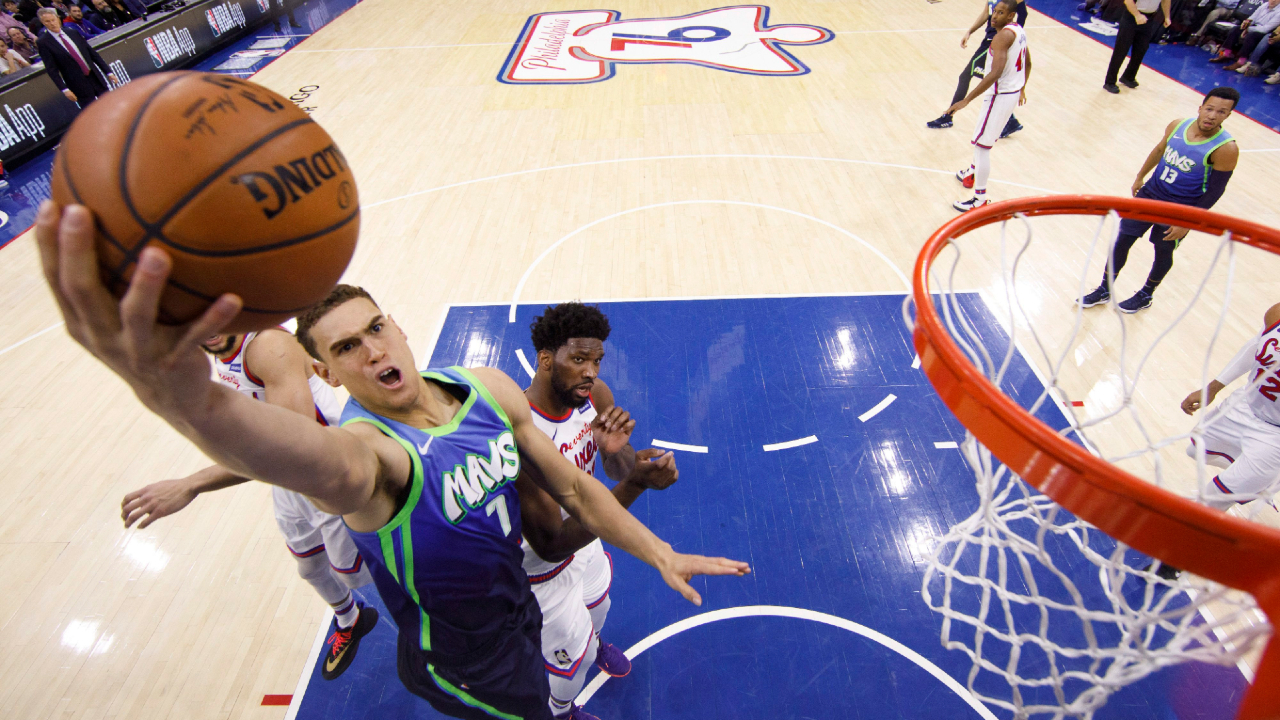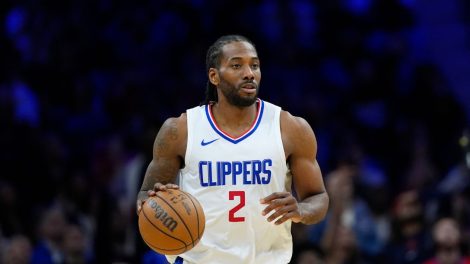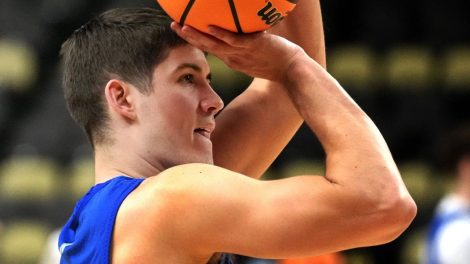Dwight Powell’s basketball journey is full of unusual twists, turns and setbacks. Through them all, though, it’s been guided by one idea: Don’t hold back, don’t leave anything on the table by not reaching high enough.
“That’s how I was raised,” Powell says. “That’s how you approach things that you’re passionate about, you give them everything you have.”
His hoops career began by coincidence and has been fuelled by tragedy. And even while trying to rehabilitate a career-threatening injury in the midst of a pandemic, he’s looking ahead and looking out for others.
His mom, Jaqueline Weir, who passed away when Powell was still in college, wouldn’t have had it any other way. She’s been gone nearly eight years now, but her voice still resonates.
“The biggest thing for her was you can achieve whatever it is you want,” says Powell in a telephone conversation about his breakout season, coming back from a torn Achilles tendon and his mom, who raised him as a single parent. “There’s no such thing as excuses, so long as you’re putting in the work.”
Her message?
“Life is going to give you what you get, not necessarily what you deserve, but if you take what it is and work as hard as humanly possible and make the sacrifices, the sky is the limit.”
But first, the coincidence.
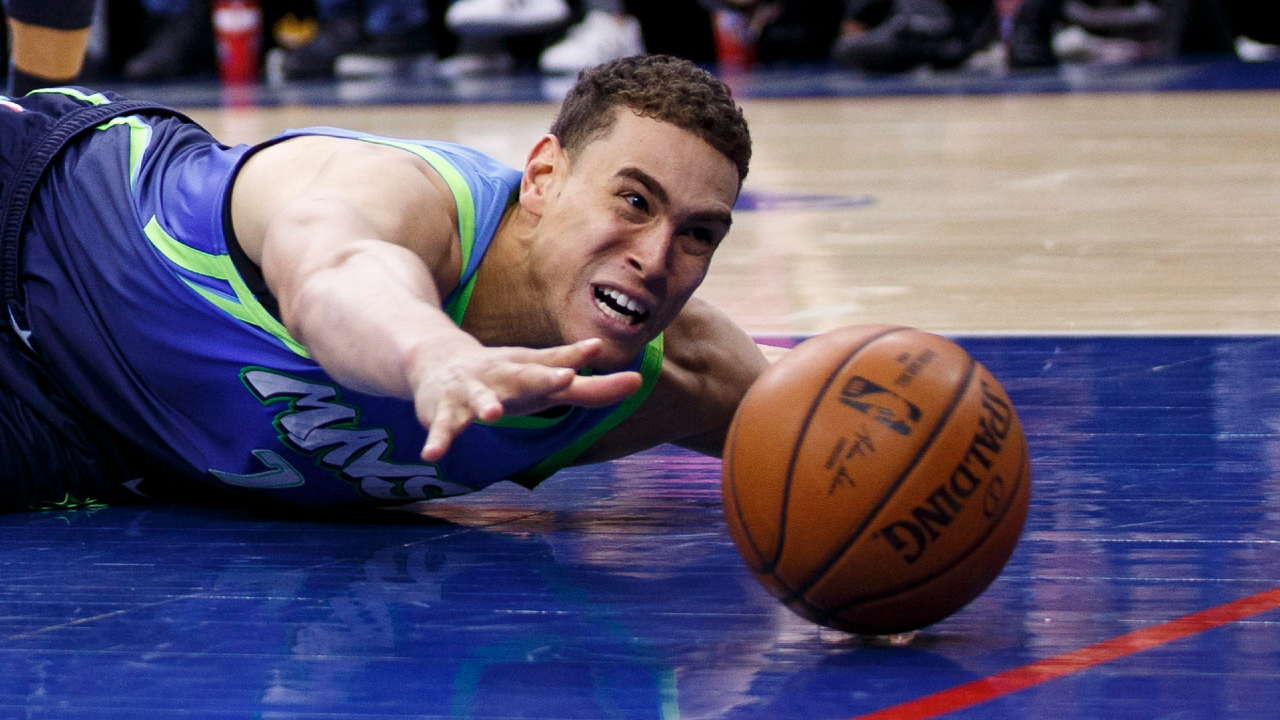
Powell probably doesn’t become among the most accomplished and respected of the 22 Canadians who suited up in the NBA this season — a league record — if he’s not riding the 510 Spadina streetcar southbound on the way to high jump practice at the University of Toronto during the summer before Grade 9.
Another regular on the 510 was Vlad Matevski, who was playing in the U of T summer league in another part of same building. After finishing his university playing career, Matevski was transitioning into coaching at Toronto 5-0 — a club program for underprivileged kids sponsored by the Toronto Police Service.
“I’m on the streetcar and I see this kid in front of me who looks great for basketball, I’m like, okay, whatever,” said Matevski, the son of a coach who emigrated to Canada from Macedonia as a teenager. “We both get off at U of T and I’m going to the second floor where the gym is and he continues up the stairs to third floor, where I don’t even know what’s going on.
“The first week, I don’t say nothing. The second week, I see him again, same thing, same time. I don’t say nothing.
“The third week I’m like, ‘I got to say something,’ so I’m like, ‘Hello, where are you going upstairs, the basketball courts are here. Why are you going upstairs?’”
Says Powell: “I said I was going to the track to practice high jump.”
Matevski: “I said in that kind of direct European talk, ‘What do you mean you’re doing high jump, are you crazy? You are perfect for basketball.’”
Powell: “He’s says ‘Kid, give me your number, you’re going to come play for my team.’ And I’m like, ‘I don’t know who you are, but good talk. How about you give me your number and my mom will call you?’”
Matevski: “Later on his mom called me so I booked the gym over there and we had our first workout.
“He had no skill, just raw talent. But I told him and his mom, ‘listen, let’s put in some work, you have a bright future out there.’
“That’s how it started.”
They’ve been together ever since, with Powell the star pupil of Matevski’s Real Basketball Training group that counts a number of Canadian pros among its alumni. Powell considers Matevski one of his closest confidants — a combination of friend, mentor, brother and father figure.
Some rides on the TTC are better than others, safe to say.
“The reason I am where I am now, the reason I’m still working hard as I do is because at no point have I stopped to look back or count how many steps I’ve walked or looked to see who’s beside me in the race.”
From those beginnings, Powell has carved out one of the best careers of any national team athlete not named Steve Nash.
Canadian basketball has its share of rising stars — lottery picks who were tabbed as NBA-bound the moment they left high school for a single year of college. Powell’s route was necessarily longer, but with his mom’s advice and Matevski’s tutelage he’s climbed steadily, step by step.
By several measures — longevity and efficiency, to name just two — he’s the most accomplished NBA player Canada has right now, or is at least neck-and-neck with Tristan Thompson, the fourth-overall pick in 2011 and Canada’s most touted prospect for years before that.
Not bad for someone who essentially started from scratch in high school.
“I had never played on any teams outside of school other than soccer. No hockey, no basketball,” says Powell, who trains with Matevski in the summers at HoopDome at Downsview Park in Toronto and consults via video during the season. “That was the first time I was exposed to the sport seriously, was through Coach Vlad.”
At the time, Matevski was already working with some promising talent. Even with his size and athleticism — Powell was six-foot-six to start Grade 9, and on his way to an eventual six-foot-10 — he had a hard time keeping up with some of the older players.
When he began running with Ro Russell’s legendary Grassroots Elite AAU program out of Falstaff Community Centre — a gym loaded with high major prospects and future pros, Thompson among them — things going only got tougher.
“I first remember seeing a young, skinny [tall] kid in the Falstaff gym who I didn’t recognize,” recalls Olu Ashaolu, a veteran international pro who played nationally for Canada as a teenager and who was one of the first elite prospects to go to prep school in the US before playing collegiate ball at Louisiana Tech and Oregon. “Ro Russell assured me that he would help the Grassroots program and that he had potential.
“… I go away to prep school and come back one summer, and I’m now looking up at this still scrawny but now towering kid. He developed [and] grew into his frame. Dwight was like a Tim Duncan as far as his personality. Quiet. Didn’t say much. Ultimate team guy. Never caused any trouble. Very humble and appreciative.”
Being behind so many players in the gym didn’t discourage Powell, it motivated him.
“The lure was seeing these guys who were my age had been doing it for so many more years at that level, and seeing how much better they were and just competing with them,” he says. “…skill-wise, I wasn’t anything to write home about so to see those guys who were slower, shorter, less athletic or what may have you, run circles around me was really frustrating.
“And coach Vlad was the perfect guy to point out — in a good way — all your flaws and put you in a situation where you might be a little uncomfortable and force you to face those things.”
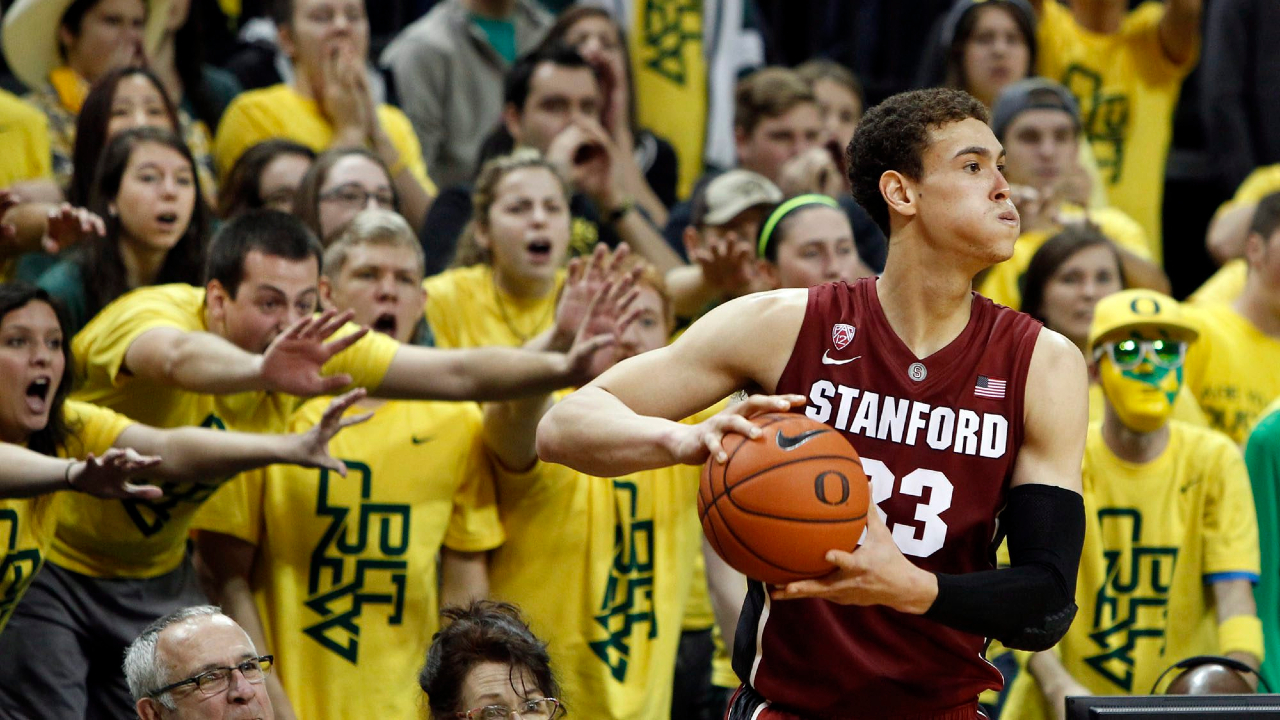
Powell ended up heading south early also, playing at the IMG Academy in Florida before enrolling at Stanford (his backup choice was Harvard).
“Fast forward to the 2011-2012 season, I transferred to Oregon and he’s at Stanford and we got to square off,” says Ashaolu. “I knew from watching the scouting report film that he was on his way to NBA. At six-foot-10 [he had] soft hands, [a] great feel for the game and although a nice guy, he would throw down some ferocious dunks. It was a kind of a full circle moment seeing him come up and getting to actually share the court together. I have nothing but love for the guy.”
But even the NBA route didn’t unfold without some bumps.
Powell played all four seasons at Stanford and was the 45th player taken in the NBA draft, but was traded by the Charlotte Hornets to the Cleveland Cavaliers on draft night; from Cleveland to the Boston Celtics on the eve of training camp and then to Dallas before Christmas of his rookie year — where he ended up with twice as many minutes played in the G-League than in the NBA that season.
Fast forward?
Powell showed enough promise as a selfless, mobile big who would set screens, roll hard to the rim and finish nearly everything he touched that the Mavs signed him to four-year deal for $37-million in 2016 and enough subsequent development that he became a starter this season and earned a three-year, $33-million deal this past summer.
After six seasons, he ranks third in his draft class in WinShares, trailing only Nikola Jokic and Clint Capela. Among the Canadians in the NBA since his rookie season, only his old Grassroots teammate Thompson ranks ahead of him in the catch-all stat. Powell’s 60.3 per cent mark from the floor over the past three seasons is seventh in the NBA among players with at least 20 minutes played per game.
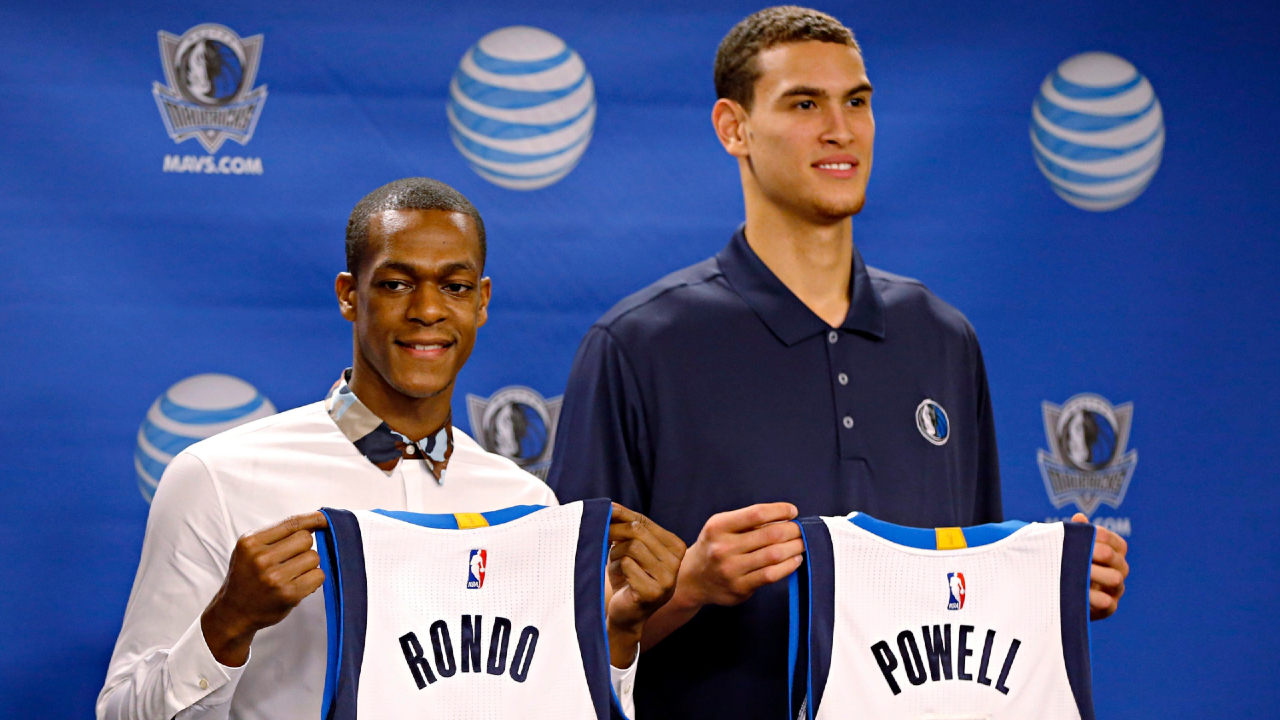
Powell, 28, is pleased with his progress — but hardly satisfied.
“The reason I am where I am now, the reason I’m still working as hard as I do is because at no point have I stopped to look back or count how many steps I’ve walked or looked to see who’s beside me in the race, kind of thing,” he says. “I think that’s done wonders for me, mentally.
“One of the things I learned early on, before I even went to college was that the moment you think you’ve made it is when you start to fall off,” he says. “As long as you’re striving to get to the next step and finding ways to get better physically and mentally or whatever it may be to help the team win, that’s always been my focus.
“So I haven’t really taken the time to compare careers or take it all in just yet.
“Maybe when it’s all done or when we get a ring I can sit down and write down some thoughts but I don’t think about it too much, to be honest.”
He got the message from everywhere.
“He started late and just because of that I put it into his head: Look, the only way you can catch up is we have to work triple than anybody else and that’s what he did,” says Matevski.
“And then as soon as he got drafted that was my main thing to him: You enter that gym first and you leave last …that’s your job. You have to show you deserve to be on the court. You have to get better.”
But Powell had just as powerful a role model close to home.
“Life is going to give you what you get, not necessarily what you deserve, but if you take what it is and work as hard as humanly possible and make the sacrifices, the sky is the limit.”
His mother graduated from Eastern Commerce Collegiate Institute in downtown Toronto and went straight to work as a bank teller, but never stopped going to school at night, upping her qualifications so she could eventually move into the executive ranks. She passed along her height and athleticism to her child — she stood nearly six-feet-tall, ran the 400 and did long jump in high school — but more importantly set a standard for what it took to achieve goals.
“His mom was a hardcore worker,” said Matevski. “She reached the highest level in the banking industry obviously from hard work. Everyone that was around him was preaching the same stuff. He knew only that.”
He has approached his injury — sustained on a routine step to the basket on January 21st — with the same methodical approach has taken to his entire career.
There was some frustration because it came out of nowhere — “He’s like, bionic,” says Matevski — and Powell’s commitment to his preparation is meticulous to the point his work habits have become a Mavericks touchstone.
“He’s a constant,” Dallas head coach Rick Carlisle told reporters the night Powell was hurt. “He’s a constant team-first guy; he’s a constant worker; he’s a constant everything. Guys like him define the culture we want here.”
A devastating injury is cause for reflection, but as Powell searched for explanations or reasons, he was oddly reassured: There were none.
“I spent the first week before the surgery going over my routine,” Powell says. “Three times a week I have three sessions dedicated to developing a more robust tendon, both the Achilles and the patella, things I would do before and after practice.
“I followed up on those — did I miss a rep? — [or] whatever it might be, but once I did the surgery prep and talked to the Doc he was like, ‘Hey man, there’s no rhyme or reason a lot of the times when it’s a non-contact situation. When it’s time to go, it’s going to go.’ I kind of had to let that go and not blame anybody or myself. It’s just part of the journey.”
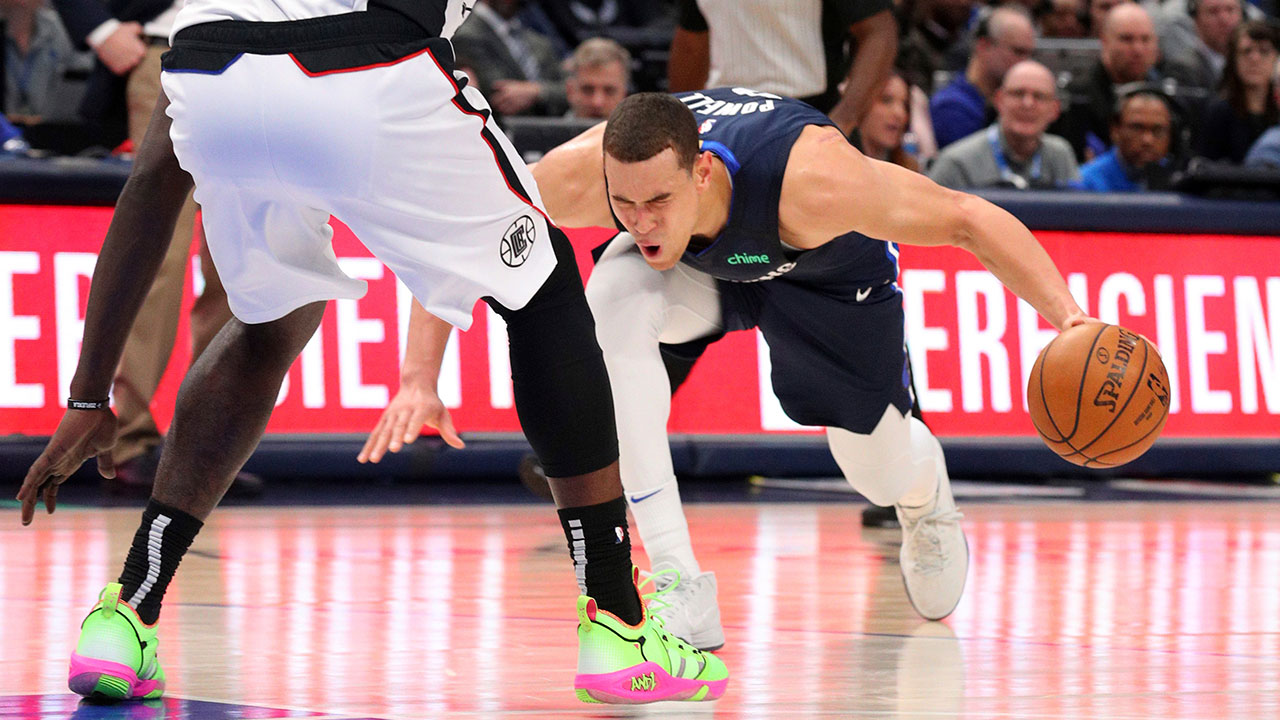
By the time league went on hiatus due to the COVID-19 pandemic on March 11th, closing facilities and leaving players to largely fend for themselves, Powell had already joined the home-fitness boom. Unable to drive and easily get to the Mavericks facility, he’d invested in some fitness equipment — including a Concept 2 Skier that mimics the upper body motion of cross-country skiing while standing still.
“Ten seconds on that at full bore will get you up to max heart rate,” he says. “I’m a push-up master and mixing in that cardio, so I’m actually in great shape, considering I’m not able to run right now.”
When looking for an additional challenge, he can occasionally be seen in the background doing ab work as his girlfriend — a popular Soul Cycle instructor — livestreams classes on Instagram from his place in Dallas.
He’s been keeping busy otherwise as well. He’s a spokesperson for a fundraising effort by the philanthropic arm of Dallas Independent Schools aimed at providing meals and computer resources so at-risk kids can finish their school year effectively from home.
“Because of the value I place on education on an individual basis [Powell graduated from Stanford with a degree in science, technology and society], if I was one of those kids and I didn’t have the access to school programs, I can’t even imagine how frustrating it would be to fall behind due to these kind of circumstances,” he says. “So any chance we have to help them that fight, we have to do what we can.”
Powell’s other philanthropic work involves supporting families who have some someone in their lives going through cancer treatment through the Dwight Powell Children and Family Support Fund in partnership with UT Southwestern medical centre in Dallas.
Powell was just about to begin his junior season at Stanford when he went to visit his mom in Boston, where she had relocated in her role as audit manager and vice president at New York Mellon Bank.
It had taken her just over 30 years to rise from a teller at Montreal Trust in 1979 to a vice-president role at a major US bank, her dream job. She had been undergoing treatment for breast cancer but had kept the diagnosis from her son rather than risk him being distracted from his path.
“It was just me and her, [and her] biggest thing was making sure I had opportunities to be successful as I wanted to be,” says Powell. “So she kind of went through the whole struggle on her own and kind of kept it to herself.
“I didn’t find out she had anything wrong until maybe three four days before she passed. I saw here about three days before and I spent a day with her and then she got really sick for the last couple of days and that was kind of the end of it.”
His mom died on Sept. 13, 2012 at age 53. The memories page from the funeral overwhelmingly references to how proud she was of her son. Powell’s team from Stanford flew across the country to attend the ceremony, and then Powell flew back to California to finish what they started. He put up the best numbers of his college career that season and put himself on the NBA map.
So, on one hand, Powell’s torn Achilles is no small matter. On the other, he’s got perspective on things like not many have.
“This is as serious as it gets so far in my career — but unfortunately, this isn’t the hardest thing I’ll have to deal with in my life,” he says. “And I’ll get through it like I’ve gotten through everything else.”
His mom would expect nothing less.
“She was very sweet, very loving but at the same time she was tough,” says Matevski. “I mean it’s not easy to raise a kid on your own and stuff, but she wanted the best for him that’s why she worked as hard as she could to provide everything for him.”
The messages, the example, they stuck, even though his mom didn’t get to see them lived out on the NBA stage.
“Everything I do — even before, when she was alive — was to make her proud,” Powell says. “Especially now I understand, I’m carrying a legacy for both of us, trying to make sure all the lessons she taught me I’m continuing and walking with her in mind.”
There might be a bit of limp for the moment but based on Powell’s track record, it will be temporary.
[relatedlinks]

